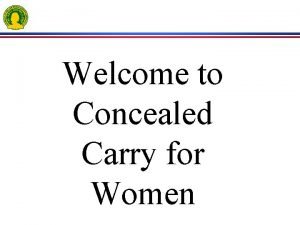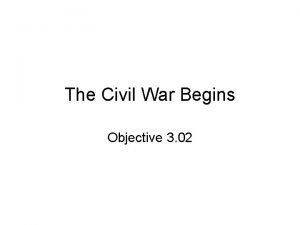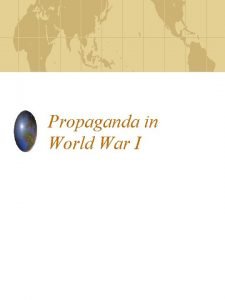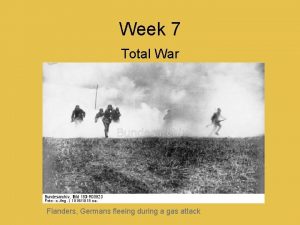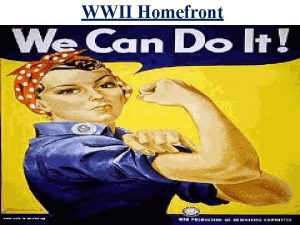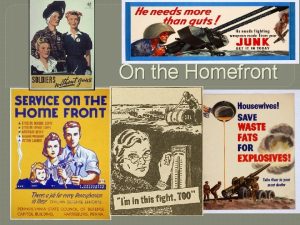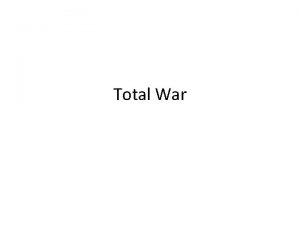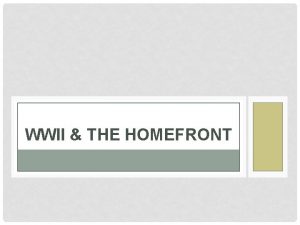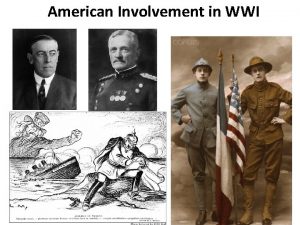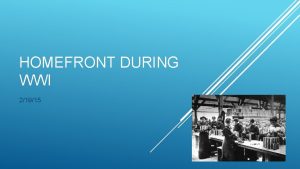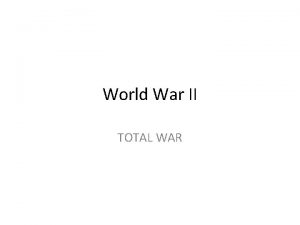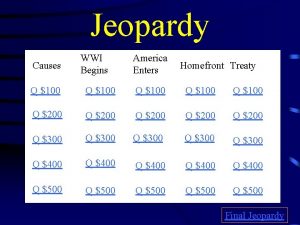WWI The American Homefront Total War When a











- Slides: 11

WWI – The American Homefront

Total War • When a country uses all available resources to aide in war effort/ whole country helps out – Factories converting from home goods to war goods – Rationing of food and other goods – Propaganda to promote patriotic feelings – Local volunteers helping sign up military men

Selective Service Act • Congress passed Selective Service Act of 1917 – All men between 21 -30 were required to register for the draft – Lottery – 2. 8 million men drafted – 2 million volunteered – Many felt the Selective Service Act violated democratic principles

African-Americans • In the Military: – 42, 000 served overseas – Segregated Units • At Home: the “Great Migration” – Many African-Americans drawn to high paying war industry jobs in the North – 300, 000 -500, 000 left the South to take Northern jobs – Start seeing Chicago, New York, Detroit, etc. have large changes in demographics


Women • In the Military: – First time women can officially serve (non combat) – Nurses, secretaries, pharmacists, photographers – 10, 000 nurses went overseas with the Army Nursing Corps • At home: – While many men were at war, women temporarily filled industrial jobs


Mexican-Americans • Many Mexicans immigrate into the U. S. during WWI for work • Some to farming jobs • Others up north for factory jobs • Lots of discrimination

Paying for War • Bonds – “Victory Bonds” – “Liberty Bonds” – Americans essentially loan money to the U. S. government. They buy a “bond” (piece of paper) for a set amount. They would be paid back (plus interest) by a set year. – $20, 000 raised this way

Food Rationing • Food production needed to increase for soldiers and allies abroad • Rationing = controlling food consumption – Not required or regulated in WW 1, just encouraged • Food Administration – Herbert Hoover • “Wheatless Mondays” and “Meatless Tuesdays” • Victory Gardens • See website for resources

Mobilization Agencies • Use the chart in your book on page 379 as a starting point • Write at least 6 Costa Questions of various levels demonstrating knowledge of these agencies • Use book and internet as resources
 Gungoddess holster
Gungoddess holster Homefront wsgc
Homefront wsgc Were critics of wwi anti-american
Were critics of wwi anti-american Pasivo total sobre activo total
Pasivo total sobre activo total Total revenues minus total costs equals
Total revenues minus total costs equals Total revenues minus total costs equals
Total revenues minus total costs equals Total revenues minus total costs equals
Total revenues minus total costs equals Total revenue minus total expenses
Total revenue minus total expenses Total war world history definition
Total war world history definition What was the union's three part plan
What was the union's three part plan Total war propaganda
Total war propaganda Total war
Total war
